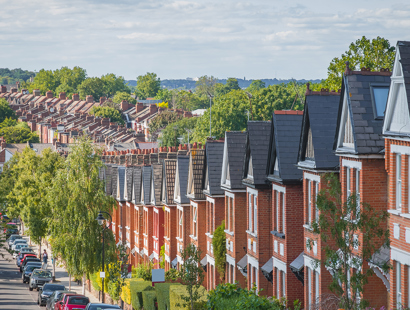
When can there be a 'continuing nuisance'? The Supreme Court’s decision in Jalla v Shell International Trading and Shipping Co provides useful guidance
Russell-Cooke's real estate experts discuss the recent cases of Jalla and another v Shell International Trading and Shipping Company and Fearn v Board of Trustees of the Tate Gallery and the evolving landscape of private and continuing nuisance.
A few months on from Fearn and others v Board of Trustees of the Tate Gallery [2023], the law of private nuisance is once again making headlines following the Supreme Court’s decision in Jalla and another v Shell International Trading and Shipping Company and another [2023]. The judgment provides further clarity on the subject of continuing nuisance.
The tort of private nuisance
The general principle is that an actionable private nuisance arises where a person does (or fails to do) something on their own land which interferes with the use and enjoyment of neighbouring land, generally (but not necessarily) by causing physical damage. The House of Lords, in the 1997 case of Hunter v Canary Wharf, identified three categories of nuisance—encroachment onto a neighbour’s land, direct physical injury to a neighbour’s land, and interference with a neighbour’s enjoyment of their land.
At the heart of private nuisance is an interference with or violation of property rights. Common examples include:
- The spread of Japanese knotweed from one person’s land to another;
- Flooding;
- “Emanations” such as noise, smoke, smell or dust;
- The interference must be substantial, and the defendant’s use of their land (the use which gives rise to the alleged nuisance) must be something other than “common and ordinary”.
Of course, there are necessary limits. Living in close proximity to other people necessarily entails, for example, a certain amount of noise disturbance. Courts have to consider what is reasonable between neighbours, or “the principle of give and take as between neighbouring occupiers of land”, as Lord Goff commented in the 1994 case of Cambridge Water Co. v Eastern Counties Leather Plc.
A successful private nuisance claim entitles the claimant to one or both of an injunction (requiring the defendant to stop the nuisance from continuing) and damages (compensating the claimant for the loss suffered as a result of the nuisance).
In the Fearn case, the crucial point was whether the Tate Gallery’s use of its land was “common and ordinary”
The claimants were the owners of flats overlooked by the ten-storey high viewing platform at the Tate Modern. The court at first instance and the court of appeal held that the flat owners were not entitled to protection from overlooking and refused to grant an injunction. However, the Supreme Court held that the Tate was liable in nuisance and overturned the decision of the lower courts. The installation of the viewing platform and its occupation by hundreds of thousands of visitors per year, many of whom look, peer, photograph and wave, was not an 'ordinary' use of the gallery’s land. The matter has now been referred back to the High Court for determination of the remedy to be granted.
Jalla v Shell
The claimants owned land on the coast of Nigeria. In 2011, a ruptured pipeline had caused an oil spill lasting roughly six hours. Although the pipe was repaired, preventing any further spillage, some quantity of oil was washed onto the claimants’ land. A claim in private nuisance was brought against Shell, as a result of the effect the oil spill had on the claimants’ land. More than six years after the spill (the relevant limitation period for the tort of common law private nuisance), the claimants sought to amend their claim form and particulars of claim. They argued that the nuisance was in fact continuing for as long as the oil remained on their land. If that was the case, new causes of action continued to arise for as long as the oil remained on the land, meaning that the claimants’ applications to amend their pleadings were not time-barred.
The claimants’ argument was rejected by the Supreme Court (as it was in the lower courts). By focussing on the continuing state of affairs on the claimants’ land, they had misapplied the legal principles of private nuisance. Lord Burrows stated, at paragraph 26:
“In principle, and in general terms, a continuing nuisance is one where, outside the claimant’s land and usually on the defendant’s land, there is repeated activity by the defendant or an ongoing state of affairs for which the defendant is responsible which causes continuing undue interference with the use and enjoyment of the claimant’s land.”
On the facts in Jalla, there was no continuing nuisance, as there was no repeated activity by the defendants, nor was there a continuing state of affairs for which they were responsible. Rather, there was an “isolated escape” caused by the oil spill. To hold otherwise would “impliedly mean that the tort of private nuisance would be converted into a failure by the defendant to restore the claimant’s land” (paragraph 36). There was no continuing nuisance caused by the presence of the oil that remained on the land in the years after the oil spill happened.
The facts and location of the Jalla case may lead one to think that the decision has limited application to neighbouring landowners in England and Wales, but the Supreme Court has given a useful refresher and guidance on the subject of continuing private nuisance.
'Continuing' private nuisances: what next?
The principles of continuing private nuisance should be of great interest to property owners and thought will need to be given on a case-by-case basis to the nature of the nuisance, the initial event, how long it lasted for, and the effects of the nuisance.
A more commonplace example of what might constitute a continuing nuisance - and one which was considered by the court in Jalla - is where tree roots on the defendant’s land encroach onto the claimant’s land, causing an interference with the use and enjoyment of the claimant’s land. Where the defendant leaves this state of affairs unremedied, they risk incurring nuisance liability by way of a continuing nuisance. So, a person wishing to make a nuisance claim on the basis of tree root encroachment would not be affected by the limitation issue in Jalla, though of course anyone seeking to bring a nuisance claim should do so promptly.
What constitutes a 'continuing nuisance' depends on the facts and circumstances of each case and it is evident from the Fearn and Jalla cases that private nuisance is likely to remain a prominent issue in the next few years.

Real estate legal news—October 2023
Welcome to the second edition of Russell-Cooke’s real estate legal news. It’s now been six months since we published our inaugural newsletter.
Get in touch
If you would like to speak with a member of the team you can contact our property litigation solicitors by email, by telephone on +44 (0)20 3826 7525 or complete our enquiry form below.






